Soleimanieh, Iraq
Try walking away from a refugee in need.
He’d just been explaining to me how a muddy, overcrowded camp for the internally displaced could appear as an oasis for him and his frightened, exhausted family. Inside a cramped tent, I had taken his portrait as he held his young son who suffers from a rare condition that prohibits him from standing, and promised to refer their case to the area rep for the World Health Organization.
As I walked away, a trembling tenor reached me: “Don’t forget me!” he called.
Desperation vibrated in his voice. Harsh as the month had been that he and his family spent sleeping on the streets before negotiating entry into the Kurdish region of Iraq had been and even though his son's condition was debilitating, his was just one of thousands of tales of hardship jostling against each other to be heard in a place where new arrivals stream in daily from the battlefields of central Iraq, many so fresh that trauma still pulses across their features. For them, the solid, dependable livelihoods they once held and the predictable, family-centered days unfurling into the future had just dissipated into dust.
Between September and December this year, I spent three months in northern Iraq in the camps of those displaced by ISIL’s spectacular summer rampage. The Islamist group’s genocidal campaign resulted in the uprooting of some two million Iraqis, the majority of them ethnic and religious minorities from what was once one of the world’s most historic and textured social mosaics. Suddenly, their lives were capsized and often for the second or third time in a decade.
Global turmoil
At a time when global turmoil is causing massive population movements, the level of misery I witnessed afforded me a frightening glimpse into our own precarious future. The mannerisms of the middle-aged men sitting in front of tents as if they were semi-detached houses, inviting me to join them for tea with the tenor of the educated and gestures betraying some of the expansiveness of their until-recently contented lives, frightened me in their familiarity. If it could happen to them, couldn’t it happen to us too?
For the first time since the Second World War, the number of displaced has exceeded 50 million. Between 2011 and 2013, UNHCR estimates that their number swelled by an eye-popping six million. Only in Iraq this year, two million people were displaced by the war between the Shiite-dominated central government and Sunni militias, chief amongst them the notorious Islamic State in Iraq and the Levant (ISIL).
While everyone I spoke to were victims of sorts—the orphans, people who had barely escaped with their lives, and frustrated, unemployed young men—dispersed among them were members of the security services and the Iraqi Army who fled when ISIL took over their towns. Men who would have struck fear into their interlocutors a few months before, now appeared bedraggled and browbeaten, scavenging through unfamiliar terrain to safeguard their families.
The shock of camp life
There is no privacy in the camps. People who once embellished their lives with private cars, detached houses and extended family networks, suddenly find themselves exposed. It's even worse in a conservative society like Iraq, where women are not used to living public lives. Families are torn apart because the Kurdish authorities, at war with ISIL, do not make it easy for non-Kurds, especially Sunni Arabs, to enter their semi-autonomous region.
When the offensive came, it was so sudden and ferocious that some were forced to leave behind older family members who couldn't run nor didn’t fit in the family transport. They calculated that ISIL would have mercy on the old and infirm. After all, their parents and grandparents were neither virile, fighting-age men, nor young women who might be sold in the slave markets of Mosul and Raqqa. But in two cases when I heard such a story, it ended with the narrator or their neighbors returning when things had calmed down a little to find Grandpa or Grandma lying on the ground with a bullet through them. It was a take-no-prisoners policy designed to sow fear and prompt mass displacement among minorities. ISIL avoided having to rule large numbers of whom they consider to be kuffar by a few paradigmatic slayings.
From riches to rags
Oil-rich Kurdistan was experiencing an economic boom when ISIL started its expansion in Iraq. In a fascinating demonstration of the power of multinationals over 'sovereign' states, the ISIL advance was immediately halted in Erbil (but not in Kobani) because of the multitude of international construction and oil companies active there. The abandoned cranes still hang over the skeletons of half-built office blocks, luxury hotels and residential compounds that were to be covered in Italian marble and feature Dubai-style penthouse views.
But instead of the companies returning, the refugees arrived. There is a neighborhood in Arbil called Ainkawa that was once a Christian village. It swelled in past years into an extension of the capital, bursting with hotels, restaurants, bars and western-style cafes to service the Iraqis and foreigners fleeing the realities of Iraq. The latest arrivals to Ainkawa were the internally displaced, mostly from Mosul’s ancient Christian community, and they now mingle incongruously with the Western aid workers in armoured cars and fellow Iraqis wealthy enough to afford $1,000 monthly rents in the same cramped and gridlocked streets that until a few years ago were village lanes.
In the eastern town of Soleimanieh, an animated film is playing in the music stalls of the bazaar. It features several scornful cartoon Kurdish soldiers trash-talking a dirty, fly-infested ISIL suicide bomber. But the detonation on 19 November of a lethal car-bomb outside the governor’s office in the centre of Arbil demonstrated that even Kurdistan is not safe.
Arbil’s usually gridlocked highway was largely empty on the morning after the blast. The locals had decided to stay in. Only baby-laden refugee women, lacking men to look after them, remained exposed at the traffic lights. As they pressed against the cars, beseechingly tapping the windows, they looked as if they were begging not for a better future but merely for survival.
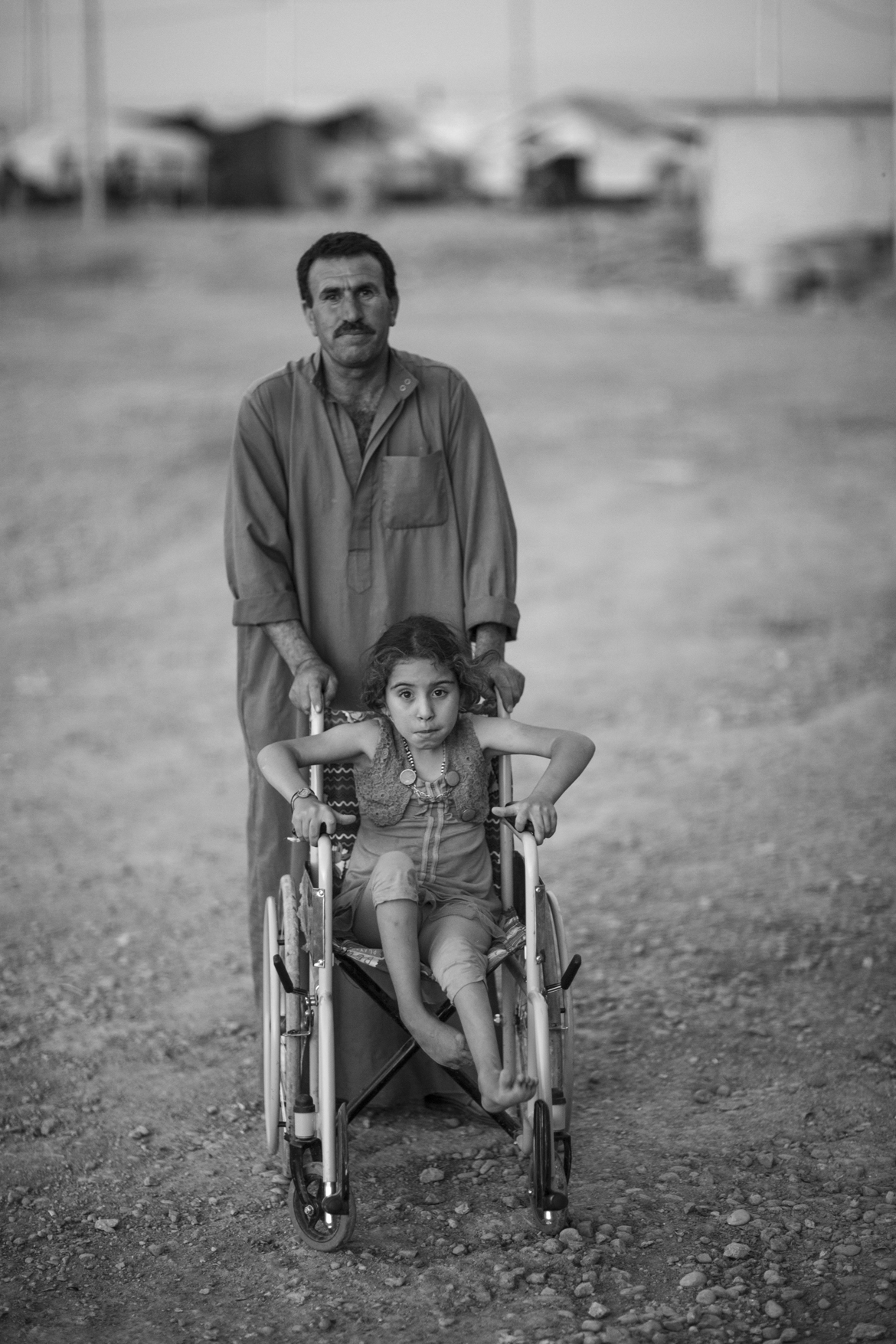
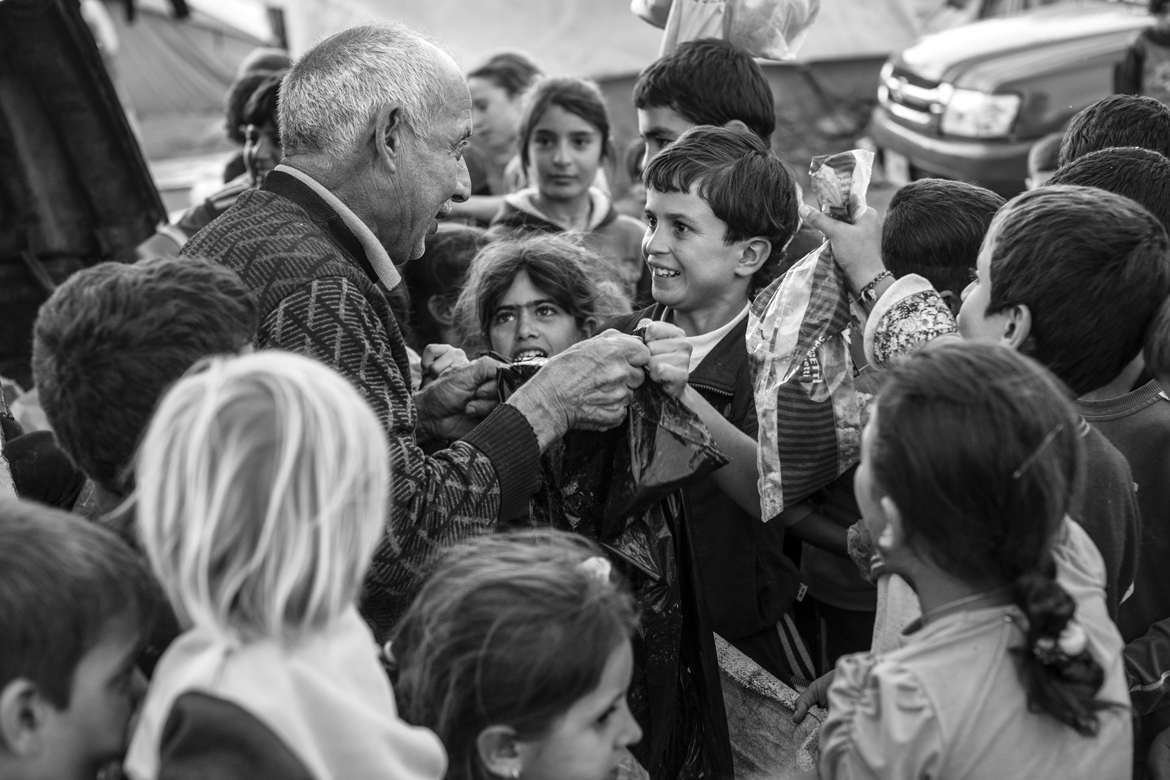
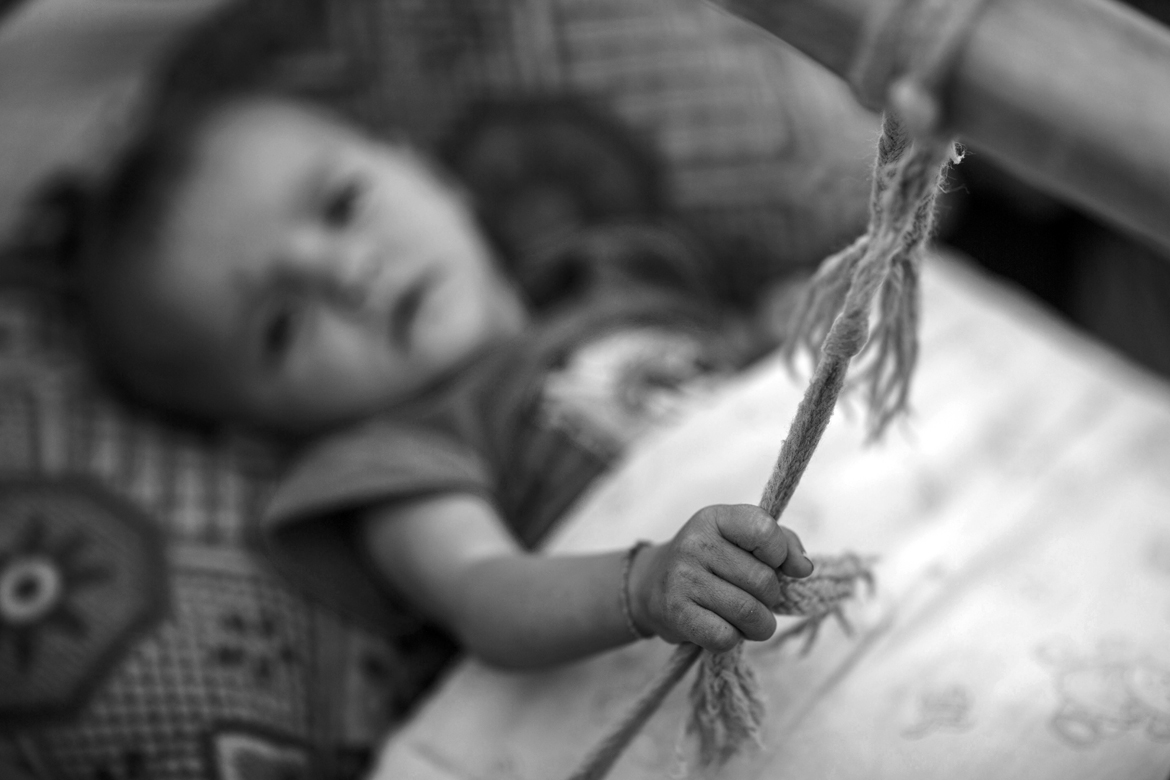
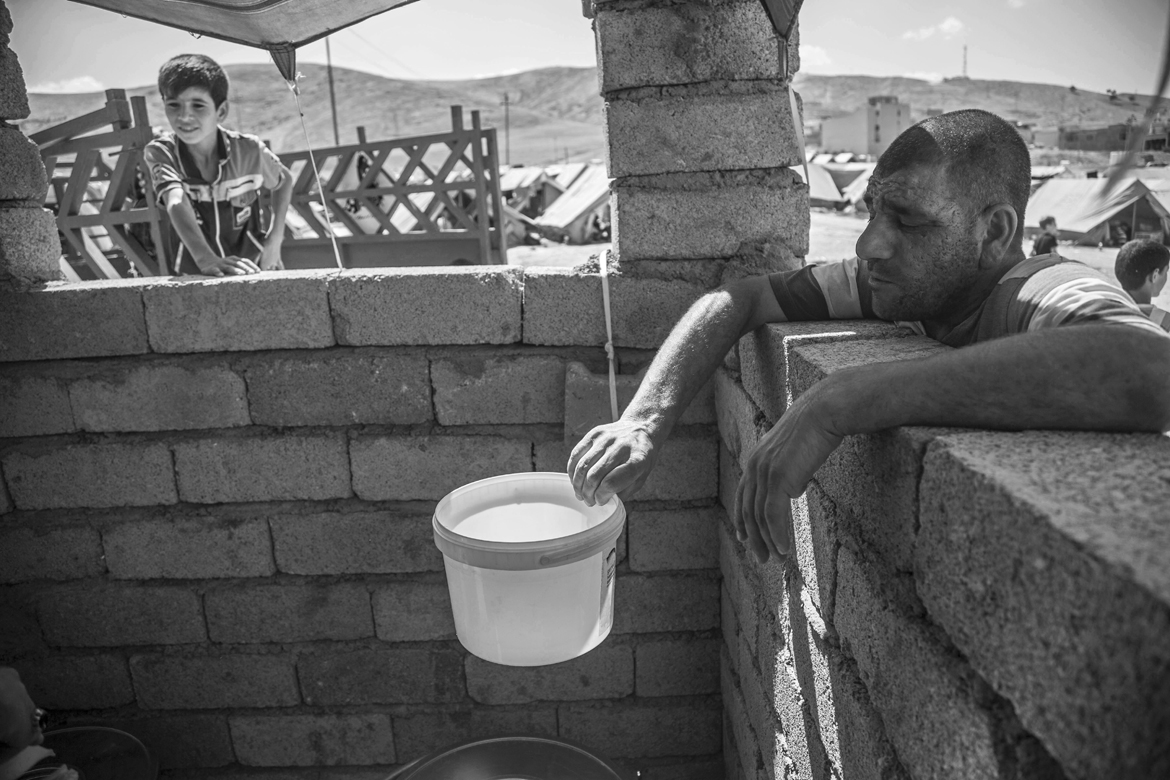
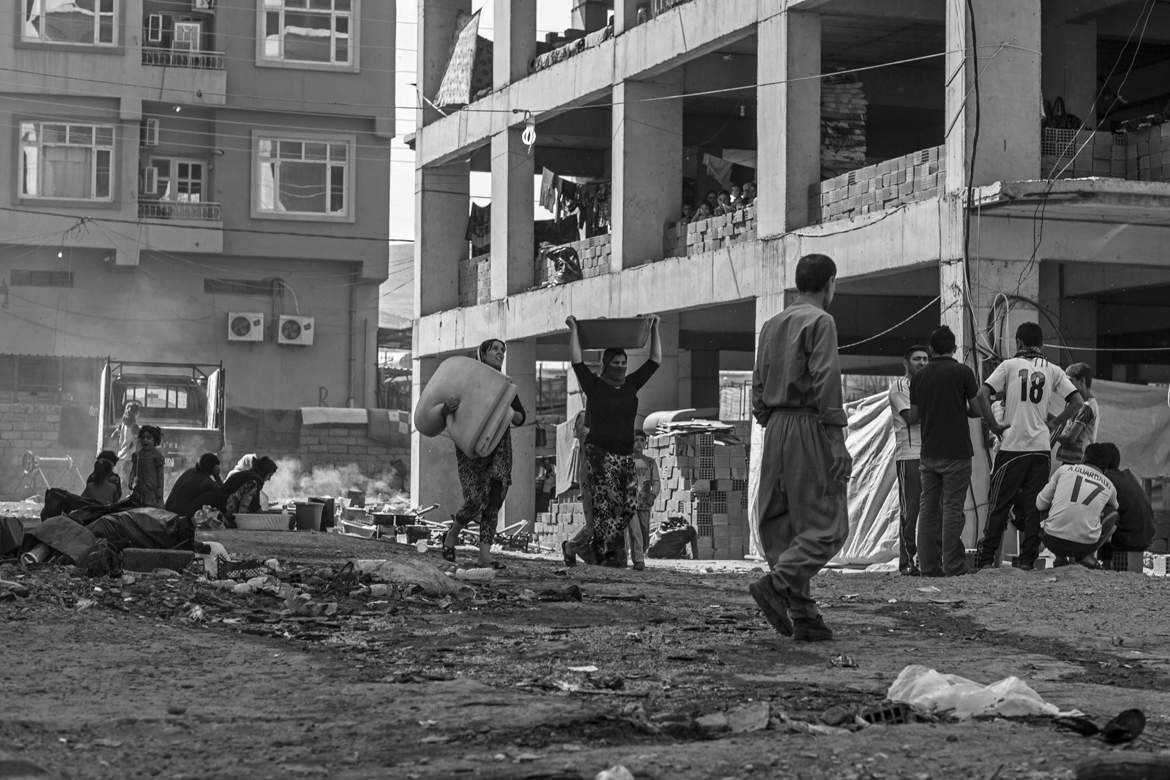
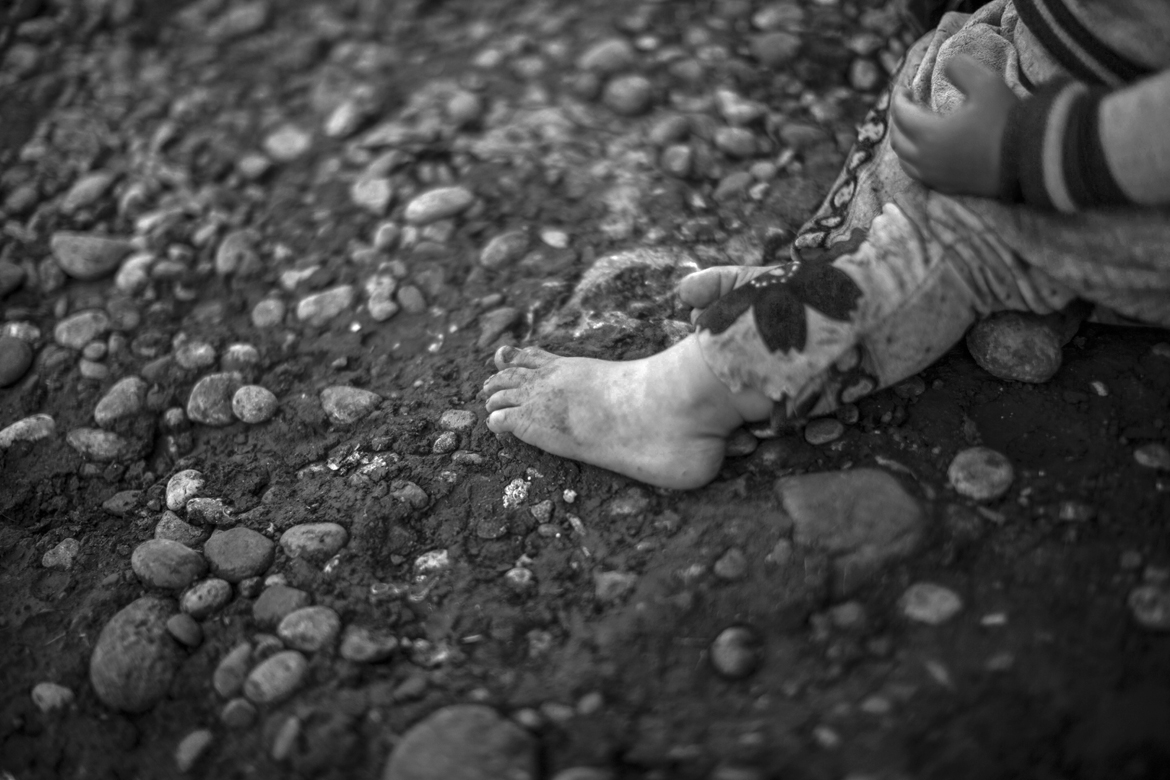
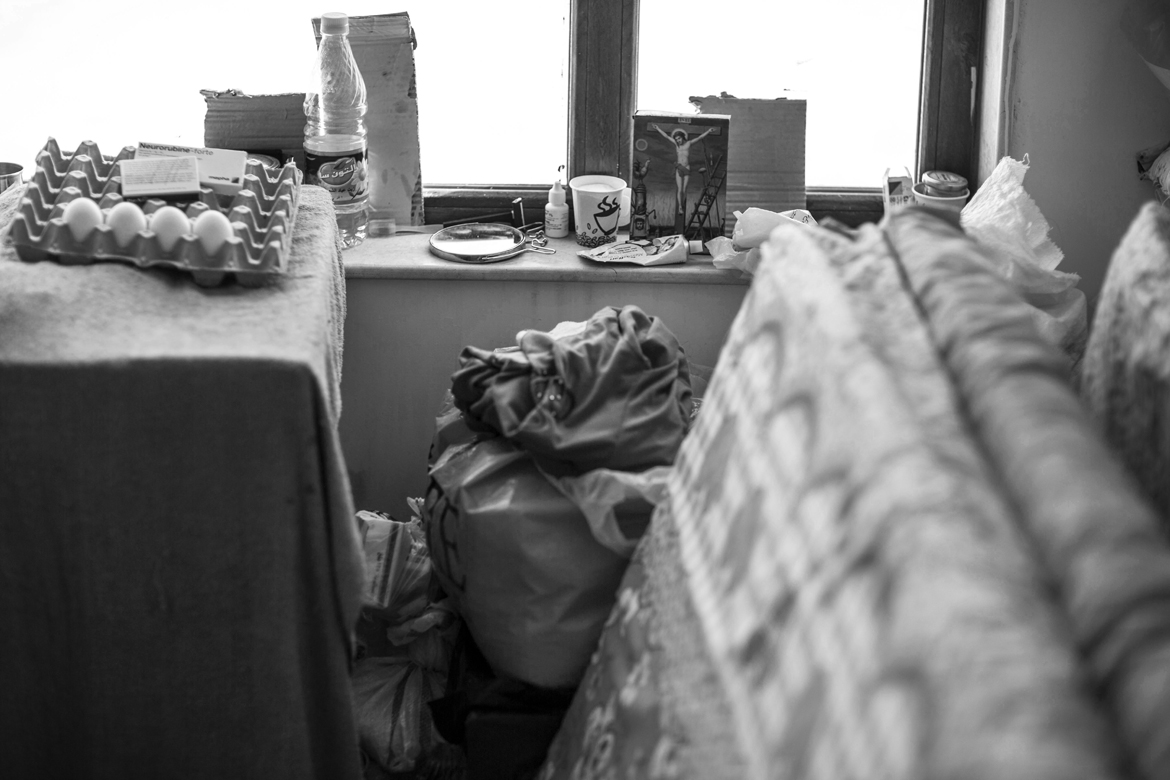
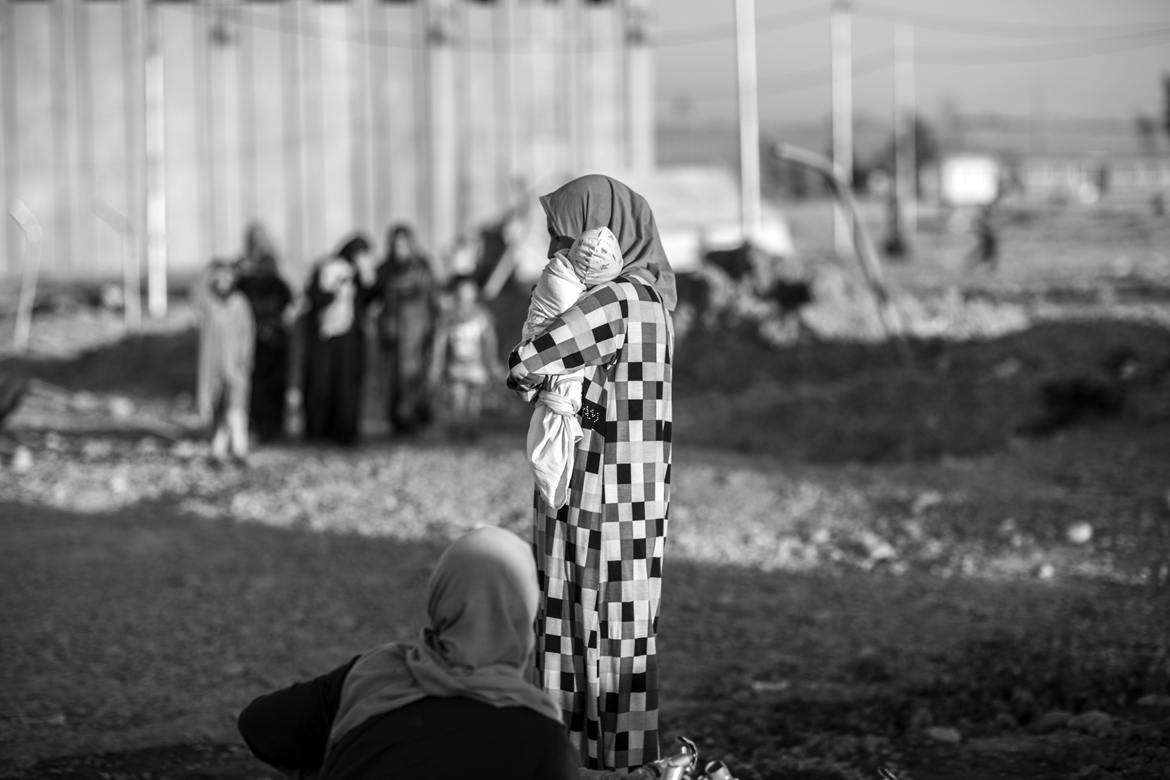
Afterword by the author:
These are images that focus on the people caught up in the tumultuous events that have resulted in over two million Iraqis being forced to flee their homes since the start of this year, with more being added daily. I photographed the mother and child in the feature image above standing against the slow-flowing Tigris as a symbol of the river of those who have been displaced and are headed to parts unknown. Those displaced are captured in their precarious new surroundings as the chill of winter replaces the heat of summer. Fittingly, the one exception to this anthropocentric collection of images is the silent testament to things people decide to take with them when embarking on the road to exile after being confronted with sudden events.
Iason Athanasiadis photographed in Iraq for the United Nations’ Office for the Coordination of Humanitarian Affairs (OCHA). All views expressed in the piece are exclusively his and do not reflect the United Nations.
